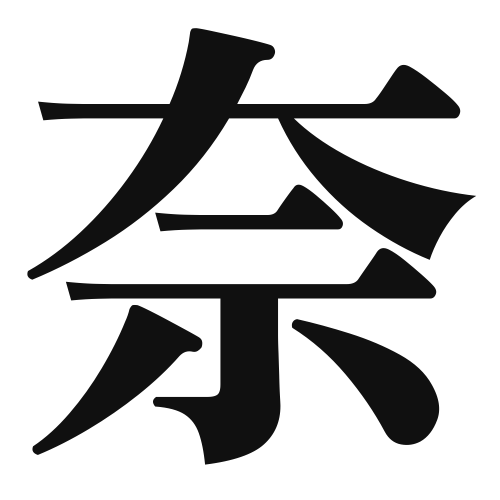1. Overview of Meaning
The kanji “奈” (na) is often associated with the concept of “what” or “how.” It is commonly used in questions and expressions that inquire about a situation or condition.
2. Formation and Radical
Formation of the Kanji: The kanji “奈” is classified as a phonetic-ideographic character (形声文字). It combines elements that suggest both sound and meaning.
Radical: The radical for “奈” is “木” (tree), which is found at the bottom of the character. This radical often relates to nature or growth.
3. Examples of Usage
Common Words and Phrases: “奈良” (Nara) is a famous city in Japan, and “奈落” (naraku) means “abyss” or “hell.”
Example Sentences in Daily Conversation:
- 「これはどうなりますか?」 (What will happen to this?)
- 「あなたは何を考えていますか?」 (What are you thinking about?)
4. Synonyms and Antonyms
Similar Kanji: The kanji “何” (nani) also means “what,” but it is more commonly used in direct questions. “奈” has a more nuanced usage in certain contexts.
Opposite Kanji: There are no direct antonyms for “奈,” as it primarily serves as a question word rather than conveying a specific opposite meaning.
5. Cultural and Historical Background
Relation to Japanese Culture: The kanji “奈” is often seen in place names and has historical significance in Japanese culture, particularly in relation to the city of Nara, which was the capital of Japan in the 8th century.
Proverbs and Idioms: While “奈” itself may not appear in many proverbs, it is often used in expressions that reflect inquiry or curiosity about life and situations.
